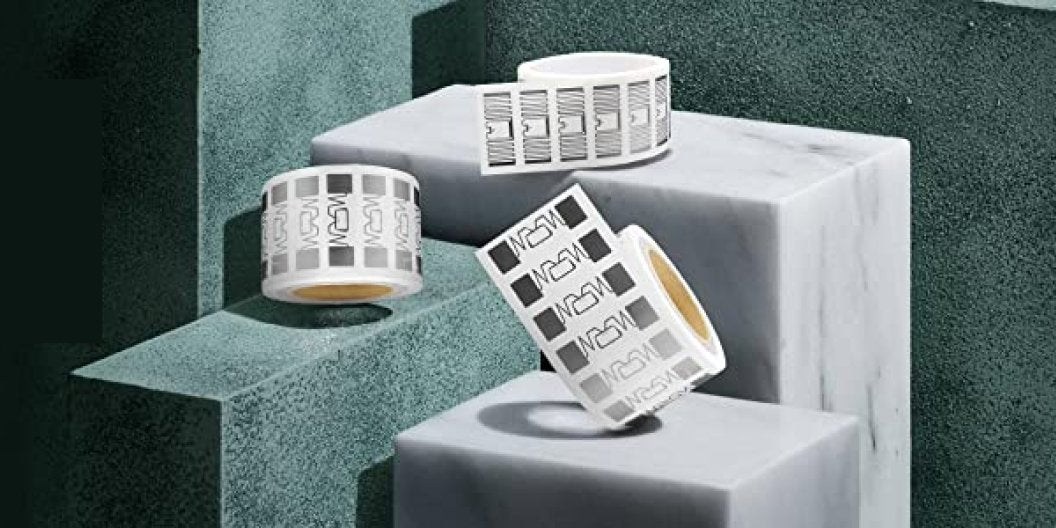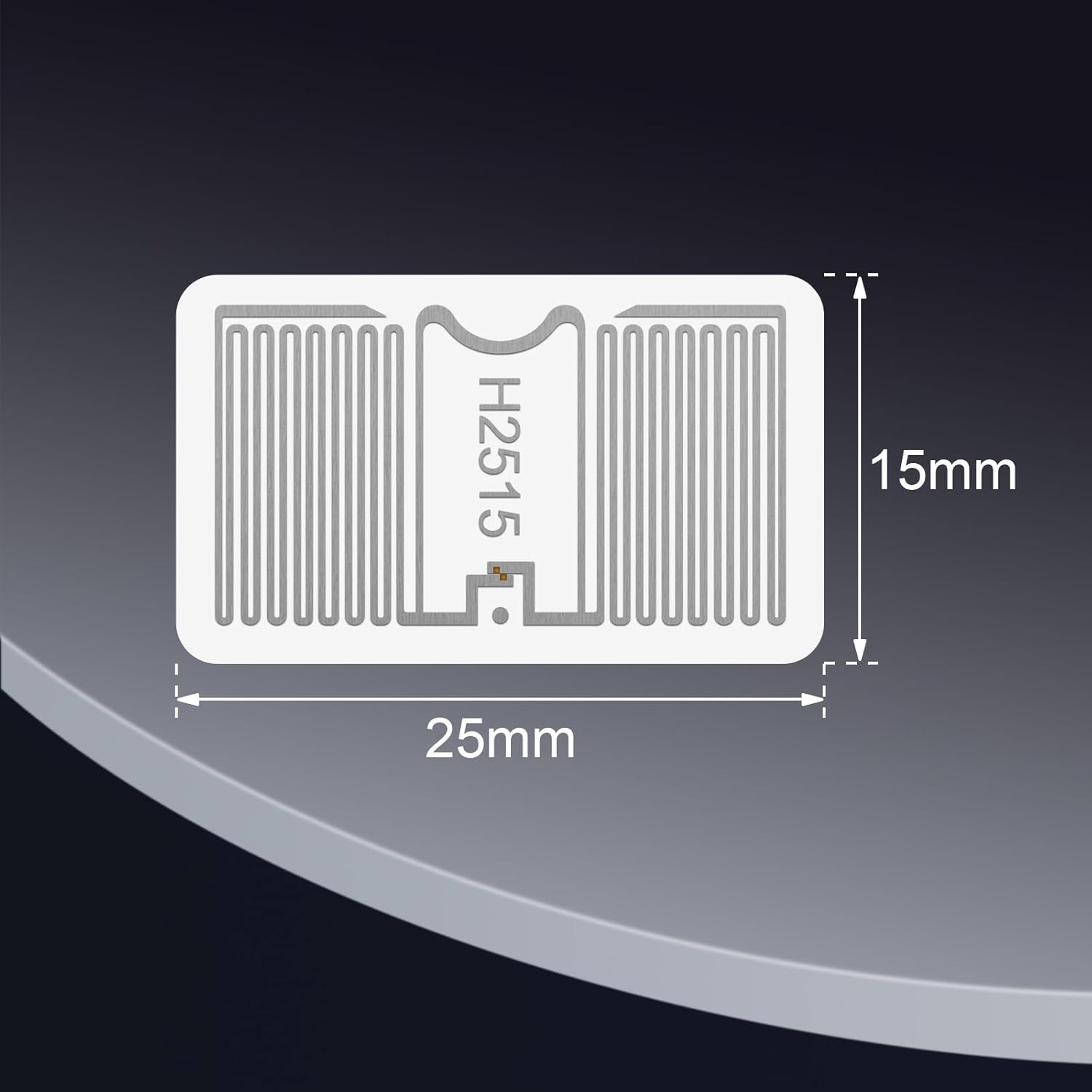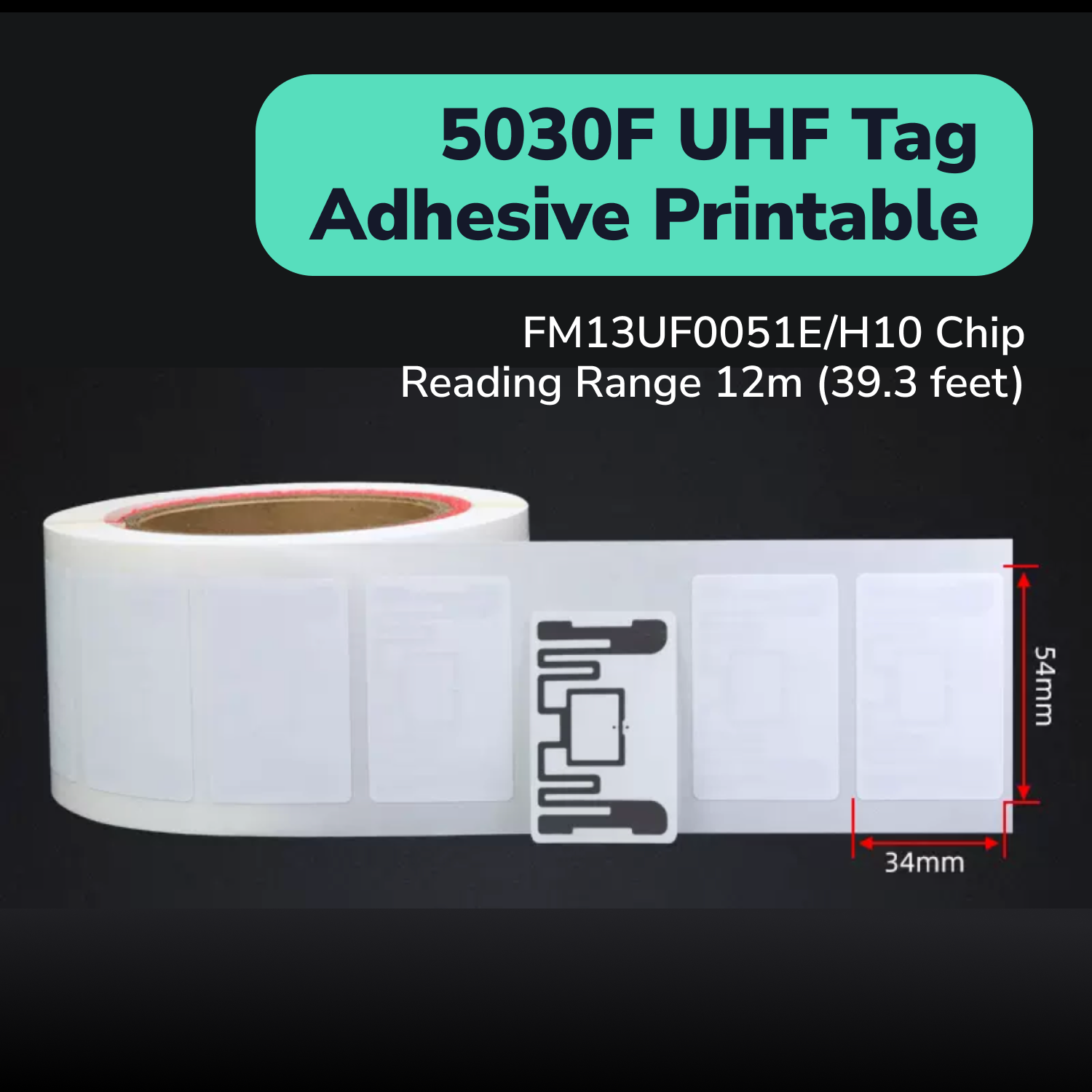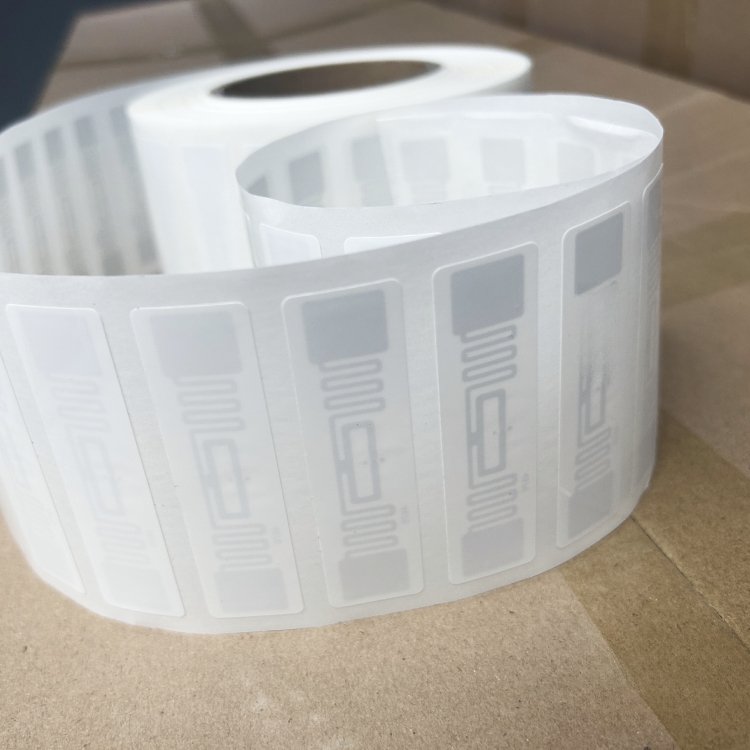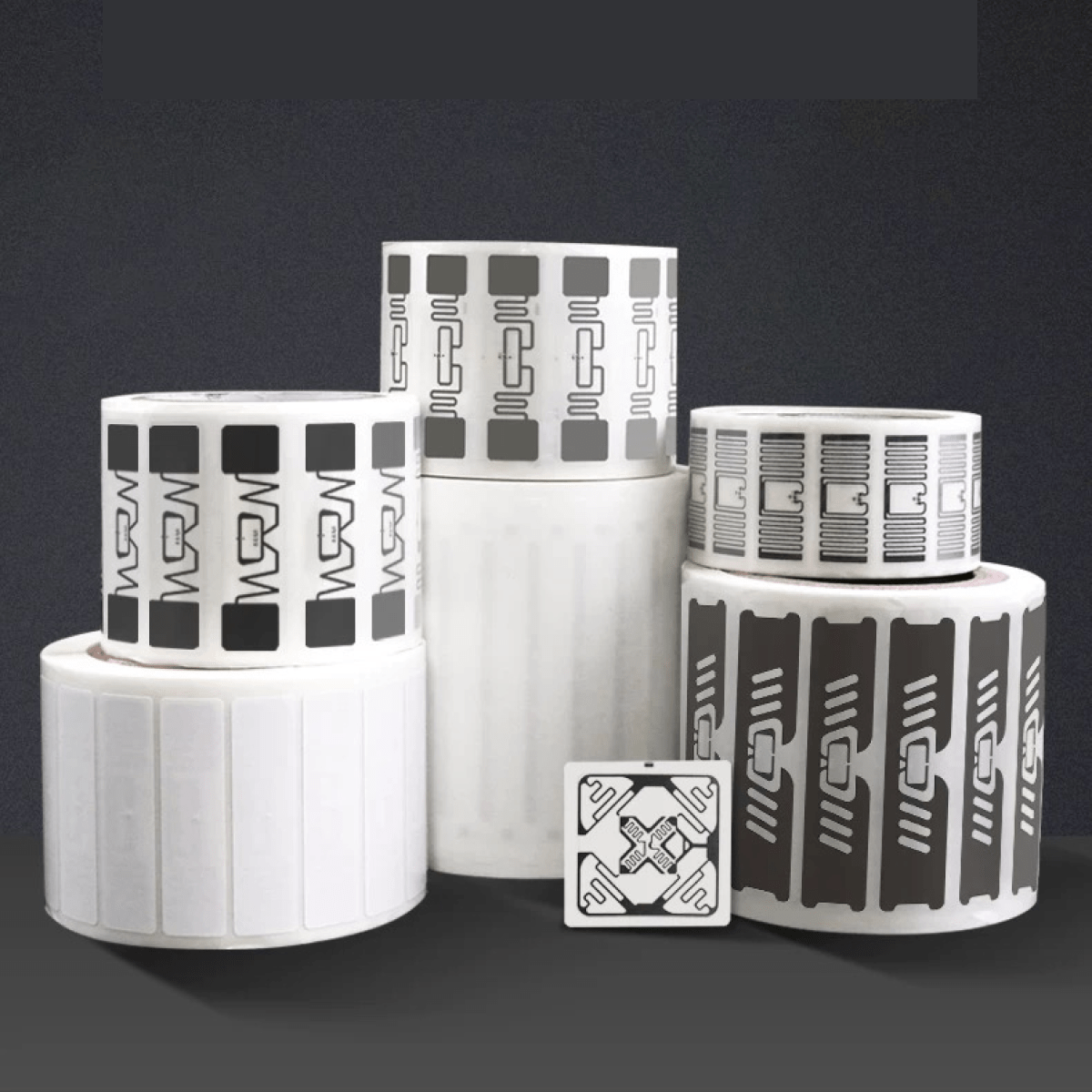¿Qué son las etiquetas RFID?
RFID significa Identificación por Radiofrecuencia . Las etiquetas RFID son pequeños dispositivos que utilizan ondas de radio para identificar y rastrear objetos. Considérelas como códigos de barras de alta tecnología que no necesitan verse para leerse.
Estas etiquetas son muy útiles en muchas industrias. Ayudan a controlar el inventario en tiendas, a gestionar equipos en hospitales e incluso a supervisar los procesos de fabricación en fábricas.
¿Qué son las etiquetas UHF?
Las etiquetas UHF son un tipo específico de etiqueta RFID. UHF significa Ultra Alta Frecuencia . Estas etiquetas operan a frecuencias más altas que otras etiquetas RFID, lo que les confiere capacidades especiales.
Las etiquetas UHF se pueden leer a mayor distancia que otros tipos de etiquetas RFID. Esto las hace ideales para rastrear artículos grandes o leer varias etiquetas a la vez.
Diferencia: etiquetas RFID UHF vs. HF
La principal diferencia entre las etiquetas RFID UHF y HF (alta frecuencia) radica en la frecuencia que utilizan para comunicarse. Esto afecta su rendimiento en diferentes situaciones.
Las etiquetas UHF operan en frecuencias de entre 860 y 960 MHz. Pueden leerse a mayor distancia, a veces hasta 9 metros o más. Ofrecen una comunicación más rápida y pueden leer varias etiquetas a la vez.
Las etiquetas HF, por otro lado, operan a 13,56 MHz. Tienen un alcance de lectura más corto, generalmente menos de 90 cm. Sin embargo, funcionan mejor cerca de metales o líquidos, que pueden interferir con las señales UHF.
¿Cómo funcionan las etiquetas RFID UHF?
Las etiquetas RFID UHF funcionan como una combinación de pequeñas estaciones de radio y receptores. A continuación, se explica brevemente su funcionamiento:
- El lector RFID envía ondas de radio.
- Estas ondas golpean la antena de la etiqueta UHF.
- La antena capta esta energía y la utiliza para alimentar el chip de la etiqueta.
- El chip luego envía su propia señal de radio, transportando información almacenada en su memoria.
- El lector capta esta señal de retorno y decodifica la información.
Todo este proceso ocurre en una fracción de segundo. Es tan rápido que un solo lector puede comunicarse con cientos de etiquetas casi simultáneamente.
¿Qué hay dentro de una etiqueta RFID UHF?
Una etiqueta RFID UHF puede parecer simple por fuera, pero en su interior esconde una tecnología increíble. Analicémosla:
- Antena: Es como las orejas y la boca de la etiqueta. Escucha las señales del lector y envía información. La forma de la antena está cuidadosamente diseñada para funcionar mejor con frecuencias UHF.
- Chip (o circuito integrado): Es el cerebro del sistema. Es una pequeña computadora que almacena y procesa información. El chip consta de varias partes:
- Memoria EPC: Contiene el código electrónico del producto, un identificador único del artículo al que está adherida la etiqueta.
- Memoria de usuario: Algunos chips tienen espacio adicional donde puedes almacenar información personalizada.
- Memoria TID: Contiene un ID único definido por el fabricante. Es como la huella digital de la etiqueta.
- Memoria reservada: esta área contiene contraseñas para proteger la información de la etiqueta.
- Sustrato: Es el material que mantiene todo unido. Puede ser plástico, papel u otros materiales, según el lugar donde se utilice la etiqueta.
Formas de etiquetas UHF
Las etiquetas RFID UHF vienen en diferentes formas y tamaños. Veamos los dos tipos principales: etiquetas/incrustaciones y etiquetas rígidas.
Etiquetas e incrustaciones
Las etiquetas y las incrustaciones son como pegatinas de alta tecnología. Son súper delgadas y flexibles.

Cómo se ven:
- Tan delgado como el papel
- Se puede doblar fácilmente
- Generalmente más pequeño que una tarjeta de crédito.
Diferencias:
- Las incrustaciones suelen ser transparentes
- Las etiquetas tienen una cara de papel o plástico para imprimir.
Datos curiosos:
- Muy barato (puede costar tan poco como 10 centavos cada uno al comprar lotes)
- Ligero como una pluma (menos de 1 gramo)
- Vienen en rollos, como pegatinas.
Usos:
- Ideal para etiquetar cosas que necesitan una etiqueta fina y apenas perceptible.
- Se puede imprimir como etiquetas normales.
Etiquetas duras
Las etiquetas duras son las más resistentes del mundo RFID. Son más gruesas y resistentes que las etiquetas convencionales.
Cómo se ven:
- Rígido y más grueso que las etiquetas.
- Vienen en muchas formas y tamaños.
- Puede ser tan pequeño como un borrador de lápiz o tan grande como una matrícula.
De qué están hechos:
- Materiales resistentes como plástico, cerámica o incluso metal.
Datos curiosos:
- Más caros (de 1 a 15 dólares cada uno)
- Puede ser súper ligero (0,2 gramos) o bastante pesado (250 gramos)
- Construido para durar en condiciones difíciles
Usos:
- Perfecto para etiquetar cosas que puedan golpearse o rayarse.
- Bueno para uso en exteriores o en entornos hostiles.
Etiquetas UHF pasivas
Las etiquetas UHF (ultra alta frecuencia) pasivas son dispositivos RFID pequeños y versátiles que funcionan sin batería.
A diferencia de las etiquetas activas con baterías integradas, las etiquetas pasivas captan energía de las ondas de radio del lector. Cuando el lector envía una señal, la antena de la etiqueta capta esta energía, activa su chip interno y envía la información almacenada.
Las etiquetas pasivas son excelentes para el seguimiento de inventario y la gestión de la cadena de suministro. A continuación, se detallan las características de las etiquetas UHF pasivas:
- No requiere batería, lo que resulta en una vida útil más larga.
- Tamaño más pequeño y menor costo ($0,10 a $3 por etiqueta)
- Alcance de lectura de hasta 30 pies (10 metros)
¿Necesita diferentes tamaños de etiquetas UHF pasivas?
Aquí tenemos una amplia selección de etiquetas UHF de largo alcance en material adhesivo PET 3M y diferentes tamaños.

¿Para qué se utiliza la UHF?
La tecnología RFID UHF tiene una amplia gama de aplicaciones en diversas industrias. A continuación, se presentan algunos usos comunes:
- Gestión de inventario minorista: Las tiendas utilizan etiquetas UHF para controlar su inventario. Permiten contar artículos rápidamente sin necesidad de escanear cada código de barras individualmente.
- Seguimiento de la cadena de suministro : Las empresas utilizan etiquetas UHF para monitorear los productos durante su traslado desde las fábricas a los almacenes y las tiendas. Esto les permite saber dónde se encuentran en todo momento.
- Rastreo de activos: Las empresas utilizan etiquetas UHF para controlar equipos valiosos. Esto es especialmente útil para artículos que se mueven con frecuencia, como las herramientas en una obra de construcción.
- Fabricación automotriz: Los fabricantes de automóviles utilizan etiquetas UHF para rastrear las piezas durante el proceso de ensamblaje. Esto ayuda a garantizar que las piezas correctas se instalen en los vehículos correctos.
- Atención médica: los hospitales utilizan etiquetas UHF para rastrear equipos, garantizar que los medicamentos correctos lleguen a los pacientes correctos e incluso monitorear la ubicación del personal y los pacientes.
- Gestión de bibliotecas: Muchas bibliotecas utilizan etiquetas UHF en libros y soportes multimedia. Esto agiliza el préstamo y ayuda a prevenir robos.
- Cronometraje de carrera: Las etiquetas UHF se utilizan a menudo en maratones y otras carreras para rastrear con precisión cuándo los corredores cruzan las líneas de salida y llegada.
- Seguimiento del ganado: los agricultores utilizan etiquetas UHF para monitorear a sus animales, realizar un seguimiento de los registros de salud y evitar pérdidas.
- Seguimiento de equipaje: algunos aeropuertos y aerolíneas están comenzando a utilizar etiquetas UHF para ayudar a reducir la pérdida de equipaje.
- Control de acceso: Las etiquetas UHF se pueden utilizar en tarjetas de identificación para controlar el acceso a edificios o áreas específicas dentro de una instalación.

